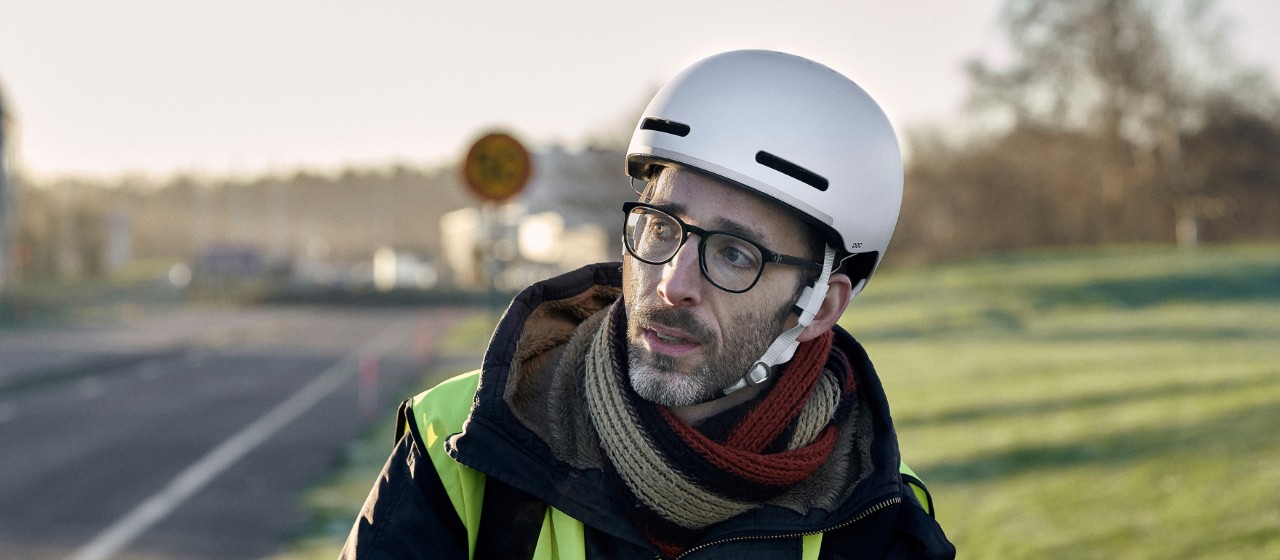
Smart bike helmet signals impending danger
23 APRIL 2019
Scania has joined a research group that has developed prototypes for bike helmets that communicate with surrounding traffic and provide users with alerts 4–7 seconds in advance of potentially perilous situations.
Following the rapid technological advances in driver assistance systems aided by sensors, radar and cameras, the auto industry is taking initial steps towards connected vehicle-to-vehicle communications and, by extension, to connected vehicle-to-infrastructure communications. When vehicles communicate and relay data to each other in real time, road safety will be even further enhanced.
“We’re introducing the cyclist as an equally important road user.”
But one significant road user has, so far, largely been overlooked – cyclists. “Nearly all attention has been devoted to cars, trucks and buses,” says Johan Fagerlönn, Project Manager at Research Institutes of Sweden (RISE). “We’re introducing the cyclist as an equally important road user.”
The research has been carried out with support from the Sweden’s Strategic Vehicle Research and Innovation Programme and, in addition to RISE, includes Scania, POC Sports, Kapsch TrafficCom, Volvo Cars and the Swedish biking interest group, Svensk Cykling.
Auditory alerts
Each helmet is equipped with auditory alerts that – based on the gravity of the situation – warn cyclists of imminent danger. The potential crash scenarios are based on actual data from accidents with bikes that have occurred. The warning can be conveyed as a vibration, from left or right in accordance with the direction of the threat. This can be supplemented with a warning sound and a voice outlining the nature of the threat, such as “car approaching from left”.
Scania, with its ample experience of developing warning signals and sounds, has been highly engaged in evaluating sounds in user tests. In the project, all three warning modes have been evaluated with regard to user acceptance and effectiveness in averting collisions. “The conclusions are similar to all traffic applications, namely that the information must be perceived as relevant by users and that users find false warnings irritating,” says Stefan Larsson, Sound Designer at Scania.
The three most common accidents
The assessment of when warnings are activated have been based on available data on accidents involving cyclists. The project particularly focuses on three common accidents:
Cyclists and motorised vehicles colliding while travelling in the same direction. This type of accidents often leads to severe injuries or fatalities since both vehicles are travelling in relatively high speeds.
- Straight crossing when cyclists and motorised vehicles collide head on.
- Dooring when drivers fail to observe approaching cyclists that then crash into opening doors.
Two different solutions for communications
Two different prototypes have been developed: one using the 5.9 GHz vehicle-to-vehicle frequency and one with mobile phone cloud-based communications. The two technologies can be considered complementary where less time critical safety-related information can be widely disseminated through a cloud-based solution and the peer-to-peer based 5.9 GHz communications channel can be used for highly dynamic collision avoidance applications.
More research is needed but the project has shown that cyclists can viably be included in the coming connected traffic environments. “Considering the fact that cyclists in many cases are most vulnerable in traffic and have the most to lose, that’s important,” says Larsson.